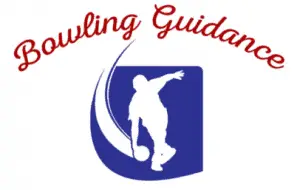
Where do you want to bowl today? What if I say Italy? Yes, you guessed it right, today we are going to talk about the Leaning Tower of Pisa oil pattern. It is also known as the Tower of Pisa oil pattern. This Kegel challenge pattern features innovations in bowling. As the name indicates, the pattern design is asymmetrical. This oil pattern retains its shape throughout the pattern length— just like the Leaning Tower of Pisa does. So without further ado, let’s learn how to play on this tricky, challenging pattern.
What is the Leaning Tower of Pisa oil pattern?
As you can tell by the name, the Tower of Pisa oil pattern (3541) is a unique one from the Kegel Landmark Patterns. Because of being a part of the challenge series, this pattern is not that easy-going. You’re gonna break some sweat to rule on the Tower of Pisa oil pattern.
The oil pattern runs 41 feet with 50 uL of oil on each board. With customization, that can be changed using the Flex Oil Machine. The standard pattern sheet suggests that the total amount of Forward Oil is 16.65 mL and Total Reverse Oil is 10.06 mL. Hence, the Total Volume Oil is 27.25 mL on the lane. When I bowled in my local bowling center, they changed the Volume Oil Total to 24.98 mL (Forward- 14.38 mL and Reverse 10.6).
Because the tank configuration, conditioner type, oil application process, etc. are also changeable with the Flex machine. In most cases, both the Fire and Ice conditioners are used. At the Kegel Training Centre, the standard chart suggests that the Total Boards Crossed in this pattern are 545 boards (333 Forward Boards Crossed and 212 Reverse Boards Crossed).
How to attack the Leaning Tower of Pisa oil pattern?
Well, you know the drill. Without any second thought, let’s go ahead and use the ‘Rule of 31’ first. As mentioned before, the Pattern Length (PL) is 41. so let’s just deduct 31 from that. PL – 31 = the number of the board you should utilize to set your target. So, 41-31= 10. Therefore, you want your bowling ball to roll somewhere around the 10 board on the freshly applied pattern. This is where you’re gonna see your ball exit the oily part of the lane.
Previously, the bowling oil patterns I talked about were symmetrical. So playing from either left or right is pretty similar to those symmetrical patterns. However, this pattern is different. The left-handed bowlers are gonna have to play differently than the right-handed bowlers. By looking at the pattern sheet I can tell, that the left side of the Tower of Pisa pattern is going to break down faster than the right side. This will force left-handers to move inside a bit more.
The pattern sheet also clearly indicates that you’re gonna face more oil on the inside than on the outside. Since the rule of 31 suggests going for the 10 board, you will soon start moving inside as the pattern breaks down. The concentration of oil is higher on the right side, so right-handers will have some time to move. Once the lane starts to get dry, try to throw your bowling ball between 12-16 boards. The more you move inside the straighter your shot should be.
Straighter is greater- that’s a motto you should remember to play on this pattern. Slightly longer patterns are usually not that tricky, but the oil design on this pattern is what makes a bowler confused. Considering the length and oil volume, a professional bowler is gonna migrate toward the center of the lane and keep the ball strictly straight to hit the pins.
During your practice session, try to take some ‘burn shots’ near the 10-12 boards (assuming the breakpoint will be ~14 on this pattern). This will not only burn the oil but also create a little hold area whether or not you push your ball too far out. Observe the result and see how that works out for you.
Given the pattern runs a bit long and there is a small cliff (of oil) in the usual track area, you have to keep your ball’s breakpoint tight. Once the pattern starts to break down and you will have a little bumper created on the lane, try switching your ball instead of moving. Another simple hack is to watch and learn from other players. Do check out whichever ball fits them best and what angle they are taking.
Which bowling ball is best for this pattern?
Ideally, you should opt for something strong to get started on this bowling oil pattern. After my thorough analysis, I would say Storm Code X will do great on a freshly applied pattern. For a better continuous motion down lane, Roto Grip Idol Pearl will do you great, even if the tracks get messy. To secure your spare when you miss one or two pins, using a plastic ball that remains straight no matter what would be awesome. For that, I would suggest going for either the DV8 Spare Ball or the Motiv Midnight Sniper bowling ball.
If you want to get the best ball reaction but are worried about your low rev rate, the Motiv Trident Abyss, and the DV8 Pitbull are some of the good ball options. Storm Phaze III is a great bowling ball if you don’t have too low or too high rev rate. Hammer Black Widow Ghost Pearl, Radical Bonus Solid, these balls are also gonna play nice on the Leaning Tower of Pisa oil pattern.
Conclusion
That’s my two cents for this unique Tower of Pisa bowling oil pattern. Don’t worry the pattern is kind to all kinds of players. Just try to play in the middle and throw your balls straight and let your bowling ball do the rest. No matter if you’re a cranker, a tweener, or a stroker, you’re gonna enjoy this oil pattern and the challenges it makes you face. So keep your practice routine ongoing before your big day. Good luck!

